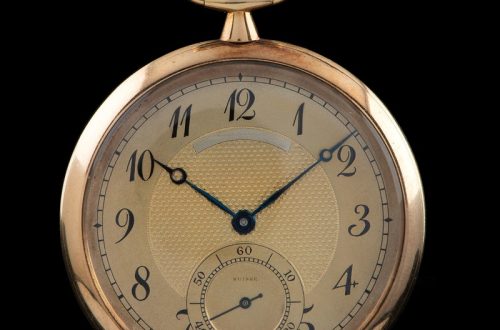Introduction to Mechanical and Automatic Watches
The world of horology is rich and complex, filled with terms that might confuse newcomers. Understanding the difference between mechanical and automatic watches is crucial for anyone interested in timepieces. Yet, this knowledge is not just jargon; it’s a doorway to appreciating the art and engineering of watches. Here, we break down these concepts into simple explanations.
A mechanical watch is driven by a tightly wound spring, known as the mainspring. When you wind the watch, this spring gradually releases energy. This energy moves the watch’s hands. A battery does not power these watches. Instead, their inner workings rely on gears and springs. It’s an age-old technology that many watch enthusiasts admire for its craftsmanship.
Automatic watches, however, add a twist to the mechanical watch design. They still use a mainspring but don’t require regular hand winding. Instead, they wind themselves as you move your wrist. Inside, a rotor turns and winds the spring. This convenience means as long as you wear the watch, it keeps on ticking.
Knowing these basics helps make sense of more detailed discussions about the pros and cons of each type. Whether you’re choosing a watch for style, tradition, or practicality, understanding the difference is key. It sets the stage for a deeper dive into the world of watches, from their complications to the choice of straps.

Key Differences Between Mechanical and Automatic Watches
When exploring the horology world, understanding the difference between mechanical and automatic watch is essential. Mechanical and automatic watches share similarities but possess key features that set them apart. Let’s explore these fundamental differences.
How They Are Powered
Mechanical watches require manual winding. Users turn the crown to tight the mainspring. This stores energy to run the watch. No battery is needed; just regular winding to keep it going.
In contrast, automatic watches self-wind. A rotor inside moves as your wrist moves. This winds the mainspring automatically. They still work like mechanical watches but without winding by hand.
Winding Frequency
A major difference lies in how often you wind the watch. Mechanical watches need daily winding for optimal performance. If unwound, they stop telling time until you wind them again.
Automatic watches wind as you wear them. They rarely need manual winding, unless left still for days. They offer convenience for daily wearers, staying wound with regular movement.
Profile and Aesthetics
Mechanical watches can be slimmer. They lack automatic winding parts, so they often have a thinner case. This can be more comfortable and visually appealing for watch lovers.
Automatic watches might be slightly bulkier. They include a rotor for self-winding, which adds some thickness. But, their convenience may outweigh this minor increase in size for many.
Movement Components
Manual watches use simpler mechanics. They have fewer parts than automatic watches, which can mean less maintenance. However, these watches require careful handling due to their delicate parts.
Automatic watches contain more components for self-winding. This can mean extra care and servicing to maintain. Yet, their built-in convenience often makes this worthwhile.

Personal Interaction
With mechanical watches, you engage directly with the watch movement. The winding ritual can be enjoyable and create a personal connection to the timepiece.
Automatic watches offer less interaction. Their self-winding nature means less frequent engagement with the crown. For some, this means less personal connection, but for others, it’s a practical advantage.
Understanding these differences will help you choose which type fits your lifestyle best. Whether it’s the manual charm of a mechanical watch or the hassle-free automatic, both have a unique appeal in the world of timepieces.
Pros and Cons of Mechanical Watches
When looking into mechanical watches, it’s important to weigh their advantages and drawbacks. Here’s a straightforward look at the pros and cons.
Advantages of Mechanical Watches
- Craftsmanship Appreciation: Mechanical watches showcase the artistry and skill of watchmaking.
- Direct Interaction: The act of winding creates a personal bond with your watch.
- Sleek Design: Without extra parts for self-winding, these watches often have a thinner profile.
- Durability: With proper care, a mechanical watch can last for generations.
- Simple Mechanics: Fewer parts mean there might be less maintenance over time.
Disadvantages of Mechanical Watches
- Daily Winding: They require regular winding, which some may find inconvenient.
- Sensitive to Shocks: Intricate parts can be more prone to damage from impacts.
- Stop When Unwound: If not wound, they’ll stop, which can disrupt timekeeping.
- No Power Reserve Indicator: Many lack a feature to show when winding is needed.
- Potentially Higher Cost: The crafting of these timepieces can reflect in a higher price tag.
Being mindful of these factors helps in evaluating if a mechanical watch aligns with your daily routine and style preferences.
Pros and Cons of Automatic Watches
When evaluating automatic watches, it’s useful to consider their benefits and drawbacks. This can help inform your decision on what type of watch suits your needs.
Advantages of Automatic Watches
- Convenience: They wind themselves as you move, saving the daily task of manual winding.
- User-Friendly: No need for daily interactions with the crown for winding.
- Active Lifestyle Fit: Perfect for those who are always on the move.
- Longevity: With regular wear, they can run for years without manual winding.
- Rich Selection: Available across various budgets with diverse styles.

Disadvantages of Automatic Watches
- Larger Profile: The self-winding mechanism often makes them bulkier.
- Rotor Noise: Some may notice a slight noise from the rotor.
- Maintenance: May require more servicing due to more complex parts.
- Higher Cost: Self-winding technology can lead to a higher price.
- Less Personal: The lack of daily winding may reduce the interaction with your watch.
Automatic watches balance convenience, durability, and variety, making them a practical choice for many. However, the trade-offs like size and personal connection are worth considering. As you reflect on these points, it’s easier to decide on the right watch for your wrist.
Considerations for Choosing Between Mechanical and Automatic Watches
When deciding between a mechanical and an automatic watch, there are several factors to consider. These factors will guide you to the best choice for your lifestyle, taste, and budget.
Lifestyle Suitability
Consider how a watch fits into your daily life. If you’re active and on the move, an automatic watch may be more practical. It winds itself as you wear it, so you won’t need to wind it manually. However, if you enjoy a routine and find satisfaction in daily rituals, a mechanical watch that requires winding could be a great choice.
Appreciation for Craftsmanship
Do you value the artistry behind watchmaking? A mechanical watch allows you to appreciate this craftsmanship through its intricate design. Meanwhile, automatic watches offer advanced technology with their self-winding mechanisms. Decide which aspect of watchmaking appeals to you more.
Budget Considerations
Automatic watches can be more expensive due to their complex self-winding mechanisms. Mechanical watches might also carry a higher price for their craftsmanship. Think about how much you’re willing to spend and explore options within that range. Remember, both types can be found across a wide range of prices.
Maintenance and Care
Mechanical watches may require less maintenance due to having fewer parts, but they do need regular winding. Automatic watches, while self-winding, might need more care due to their additional components. Consider how much time and effort you’re willing to put into maintaining your watch.
By keeping these considerations in mind, you can make an informed choice between a mechanical and an automatic watch that fits your personal style and life.
The Mechanics Behind the Movements
When delving into the mechanics of watches, it’s fascinating to see how they work. Both mechanical and automatic watches are marvels of engineering, but they operate differently. Let’s unravel the mechanical ingenuity inside these timeless pieces.
Mechanical Watches Mechanics
Mechanical watches are wound by hand, using the crown on the side. Winding tightens the mainspring, storing energy. This energy then gradually releases, driving the gears that move the watch hands. It’s a straightforward process but requires daily attention to keep the watch running smoothly.
Automatic Watches Mechanics
Automatic watches take a step further with a rotor that winds the mainspring. This rotor moves with your wrist’s motion, keeping the watch wound without manual effort. It’s a clever design benefitting those with an active lifestyle. Because the watch winds itself, it stays ready to go as long as you wear it.
Both types of watches share core elements like gears and springs but differ in energy management. Whichever you choose boils down to preference. Do you enjoy the daily ritual of winding a watch? Or do you favor the convenience of an automatic mechanism? Each brings its blend of tradition and innovation to your wrist.
Notable Brands and Their Offerings
When exploring the mechanical and automatic watch market, specific brands stand out. These notable brands combine tradition, precision, and modern innovation in their offerings.
Rolex
Rolex is synonymous with luxury and precision. They offer a range of both mechanical and automatic watches, known for their endurance and timeless design.
Omega
Omega’s watches have a legacy linked to space exploration and sports timing. They provide a mix of manual and self-winding watches that appeal to enthusiasts.
Patek Philippe
Patek Philippe represents the pinnacle of watchmaking craftsmanship. Their collections boast complicated movements and exquisite manual and automatic timepieces.
Audemars Piguet
Known for their iconic Royal Oak line, Audemars Piguet offers sophisticated automatic watches that showcase intricate design and innovation.
Panerai
Panerai is famed for its bold design and maritime heritage. They offer robust automatic watches and some manual models with a distinct Italian flair.
These brands illustrate the range and depth of mechanical and automatic watches available. Each brand offers its unique take on the art of horology, catering to diverse tastes and preferences in the watch community.
Concluding Thoughts on Personal Preferences
Choosing between a mechanical and an automatic watch often boils down to personal preference. As we’ve explored, both types have unique qualities and cater to different lifestyles and tastes. When making your decision, reflect on how a watch fits into your daily routine and which aspects of watch craftsmanship you value most.
Mechanical watches invite you to partake in the timeless ritual of hand-winding, offering a direct, tactile connection to your timepiece. If you enjoy the idea of engaging with your watch’s mechanics daily, a mechanical watch could be immensely satisfying.
On the other hand, automatic watches are about ease and functionality. They keep themselves wound with your body’s natural movement. If you lead a busy life or prefer the convenience of a ‘set it and forget it’ approach, going automatic might be the way to go.
Cost is another factor to consider, as well as the level of maintenance you’re prepared to undertake. Ponder the potential higher price point of mechanical watches against their artistry, or the practical self-winding function of automatic watches that might command a more frequent servicing schedule.
In the end, whether you choose a mechanical or an automatic watch, it’s about what feels right on your wrist and resonates with your way of life. Both selections embrace the spirit of horology and offer a distinct set of advantages that make them worthwhile investments.
Consider both sides, weigh the difference between mechanical and automatic watch features, and remember that the best choice is the one that aligns with your personal story and style. Your watch, whether mechanical or automatic, is not merely about telling time; it’s a statement about who you are.





